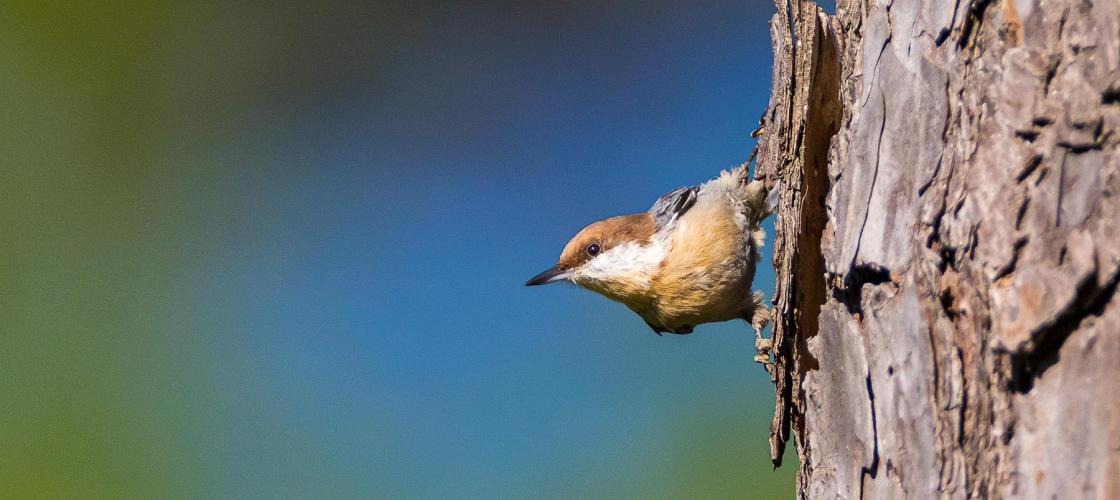
After years of planning, our small team of brown-headed nuthatch restoration partners and volunteers were set up and ready in Arkansas and Missouri last August. On the Arkansas side in the Ouachita National Forest, U.S. Forest Service staff helped us scout sites and set up nets. On the Missouri side in Mark Twain National Forest, our team with bird-banding supplies were ready for processing the birds.
At sunrise on the first day of trapping, we opened the mist nets and started blasting the squeaky brown-headed nuthatch call over speakers. Soon, three birds were enthusiastically squeaking back and headed down from the canopy, getting closer to the net. We waited behind our vehicles for them to fly into the net, but these nuthatches weren’t having it. I stood off to the side wringing my hands, willing the birds to fly into the net, and trying not to lose my mind.
The pressure was on. The time needed to get the birds from Arkansas to Missouri without being in captivity for too long left us with a small window of time for trapping. We decided to close the net and move on to another net set-up down the road, where project partners were already blasting the playback. Finally, two nuthatches flew into the net, dropping into the pocket. We radioed to the other mist-netting teams and discovered they also had caught birds. We met with the other teams to gather the captured nuthatches. They were perched quietly in individual transport tubes made of 4-inch ventilated cardboard mailing tubes and a piece of dowel in the bottom for a perch. We tossed in a few mealworms to tide the birds over during the trip, and started the haul to Missouri.
Squeaka Squeaka
The brown-headed nuthatch is a small, stocky songbird of pine woodland and forest. These 10-gram creepers climb along pine boughs and over cones, picking insects and seeds from crevices like their more common cousin, the white-breasted nuthatch. Brown-headed nuthatches’ stout and powerful wedge-shaped bills come in handy to excavate their own nesting cavities each year. But perhaps the most charming and surprising thing about these birds is their call, which sounds like a rubber ducky. No one believes me when I tell them this, but when I play their squeaka squeaka call, the response is always the same — an instant smile or chuckle followed by, “it really does sound like a rubber ducky!”
Habitat Lost
Until recently, the brown-headed nuthatch was labeled extirpated in the state, meaning it was no longer believed to exist here. According to scant historical records, the brown-headed nuthatch was recorded in Missouri in 1878 and 1907. Around that time, logging operations in the late 1800s and early 1900s had nearly denuded Missouri’s Ozark forests. Much of this forest was covered in the state’s only native pine — the shortleaf pine. Over 6 million acres of our Ozarks is estimated to have been shortleaf pine and oak woodland prior to widespread logging. When Ozark forests regenerated after tree removal, many pine acres were largely replaced by faster-growing oak and hickory species, and the last large pineries of the state were lost.
The core brown-headed nuthatch range covers pineries of the southeastern states, reaching as far northeast as Maryland, sweeping south and west into northwestern Arkansas and down into portions of Texas. These birds require pines, whether shortleaf, loblolly, longleaf, or slash, and they are most abundant in woodland or open wooded areas managed with tree thinning and prescribed fire to maintain an open canopy and understory. Nuthatches need pines for both food and nest cavities — they forage in the cones of mature pines and excavate nesting cavities in pine snags, or dead trees. So, regular woodland management is required to maintain their open habitat and provide dead pine snags for nesting.
Restoring Pine Woodland
Jody Eberly was a wildlife biologist on the Mark Twain National Forest in the 1980s and 1990s. She and other district staff advocated for the first prescribed burns on remaining pine stands in the forest in the early 2000s.
“In those days, wildlife management took a backseat to timber management, and the only places wildlife habitat was considered was where it was not feasible to cut timber,” Eberly said. “Our district staff hatched a plan to combine timber harvest and prescribed fire on the same areas and try to improve vegetative diversity on larger swaths across the landscape. People thought we were crazy, but it worked. And each year, more acres were added to the plan, as the dream of hearing the squeak back in Missouri came closer to being a reality.”
By 2010, prescribed fire on the Mark Twain National Forest had more support. The forest was awarded grant funding through the U.S. Forest Service’s Collaborative Forest Landscape Restoration Project to ramp up woodland management (tree thinning and prescribed fire) on thousands of Missouri acres to restore pine and oak woodland. These intensive efforts over two decades have grown and maintained the acres of suitable pine woodland habitat that this nuthatch requires.
Bringing brown-headed nuthatches back to Missouri is not a new idea. Conservation partners have discussed restoration for a decade since this intensive management on the Mark Twain, hoping that someday the bird could be one more component of the restoration of this pine woodland ecosystem.
For birds and many other wildlife species, woodlands are diverse and critical. Sunlight reaching through the canopy to hit the woodland floor allows for a rich vegetative layer of grasses, forbs, and shrubs, which provide nesting habitat for a broader suite of bird species. The Missouri Bird Conservation Plan, compiled by Missouri’s bird-conservation partners, outlines the most-threatened landbird species in the state. Of the 29 threatened and declining birds in the plan, 15 require open wooded habitats like woodland for nesting. Managing woodlands with thinning and prescribed fire is both sustainable and necessary to prevent further declines of many of our favorite birds, including prairie warbler, yellow-breasted chat, red-headed woodpecker, and eastern whip-poor-will.
Necessary Research
Restoration team members Tom Bonnot, assistant research professor at the University of Missouri, and Frank Thompson, U.S. Forest Service research wildlife biologist, ran important analyses to make sure the project was feasible.
“Before we were able to bring back brown-headed nuthatches, we had to answer two questions,” Bonnot said. “Are Arkansas populations healthy enough to withstand removal of nuthatches for translocation to Missouri, and does Missouri have enough healthy, sustainable pine woodland habitat to support a nuthatch population?”
According to 25 years of data from Arkansas bird surveys on U.S. Forest Service property, brown-headed nuthatches in the Ouachita National Forest have increased by 6.5 percent annually over the last 10 years. This gave researchers confidence that the birds were stable — even increasing — in nearby breeding populations.
“Brown-headed nuthatches are non-migratory birds who are relatively weak fliers and don’t disperse great distances, so their recolonization of restored pine woodland in Missouri nearly 200 miles from current breeding populations is highly unlikely,” Thompson said.
From this large dataset, Bonnot and Thompson were also able to identify common habitat characteristics measured at bird-survey points where nuthatches were recorded. These metrics were then applied to a model assessing Missouri’s habitat to determine how much was suitable for nuthatches. The analysis concluded that there was enough pine woodland habitat to support thousands of nuthatches.
With these questions answered and the necessary permits to translocate birds secured, planning began. Thompson, Bonnot, and I set to work during various COVID-19 lockdowns, gathering up field supplies, reaching out to others who had conducted brown-headed nuthatch restorations, building transport tubes to hold the birds, and even getting permission to cut a few shortleaf pines in central Missouri to build roost boxes to be placed around release sites. To pull off this restoration during a pandemic, we had to pinch pennies and depend on a small team so as not to bring together large crowds and risk spreading the virus.
Bringing the Squeak Back
After arriving at the release sites, we met up with restoration team member Kristen Heath, a University of Missouri researcher. As we exited the vehicle with the crates of birds in tubes and walked to the release site, several masked-up supporters met us along the way with cameras, documenting the occasion. Among those was Eberly, whose early habitat work was instrumental in the restoration.
“Being part of the release of brown-headed nuthatches in Missouri, and especially in my own backyard where we spent so much time and effort on management was more than thrilling and gratifying — it was a dream come true!” she said.
All released nuthatches were banded with a unique color-band combination and a silver federal bird band. Half of the birds were fitted with a radio transmitter weighing less than one-third of a gram, or about the weight of a paperclip. The batteries on these transmitters lasted about 30 days and allowed us to track nuthatches’ post-release survival. After banding the birds, our supporters gathered around in socially distanced fashion, Kristen and I each opened our hands, and both brown-headed nuthatches fluttered out and perched on nearby shortleaf pines, their squeaka squeaka calls part of Missouri’s shortleaf pine soundtrack once more.
Since our first discussions about reintroducing brown-headed nuthatches, we were overwhelmed with excitement and enthusiasm within Missouri and beyond. These beautiful birds are fun to work with, but the willingness of partners to help us has been almost as enjoyable. Without the foresight and hard work of Mark Twain National Forest staff, the habitat wouldn’t be available at the necessary scale for these special birds. With the U.S. Forest Service Northern Research Station and University of Missouri scientists, we were able to base the restoration on sound science. Jim Cox at Tall Timbers Research Station, a Florida nonprofit, shared his extensive knowledge of nuthatches, including capture and transport techniques. Tall Timbers staff even drove from Florida to help us trap birds. Ouachita National Forest staff scouted netting sites, drove us around on trap mornings, and offered to help however they could. Central Hardwoods Joint Venture has supported pine woodland restoration in the region for over 20 years. The brown-headed nuthatch restoration is a testament to long-term land management and strong conservation partnerships.
Settling In
Forty-six nuthatches were released in Missouri last fall. None of the trapped birds showed any apparent signs of stress during capture, transport, or release. Radio tracking and monthly surveys suggest Missouri’s brown-headed nuthatches are doing just fine.
“The birds are actively eating, forming small social groups calling to one another and interacting, and exploring the available pine woodland habitat — some moving as far as 3 kilometers [2–3 miles] from the release site,” Heath said.
The birds will continue to be monitored monthly until they begin nesting later this month. We will monitor nest survival and begin preparations for another batch of around 50 nuthatches to be captured and released in fall 2021.
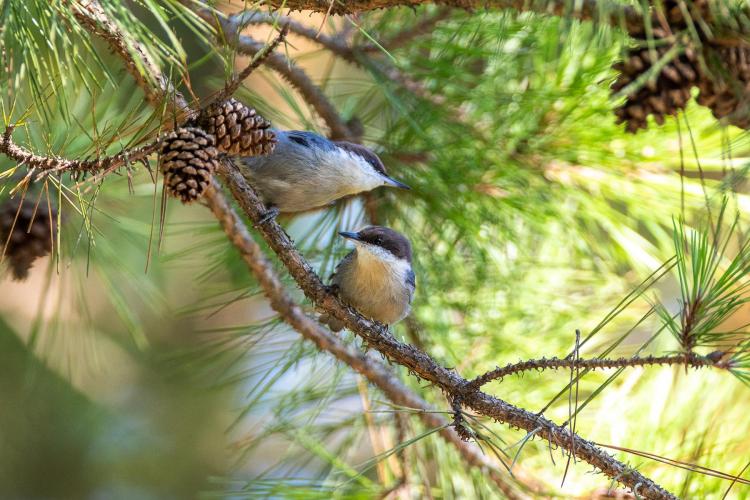



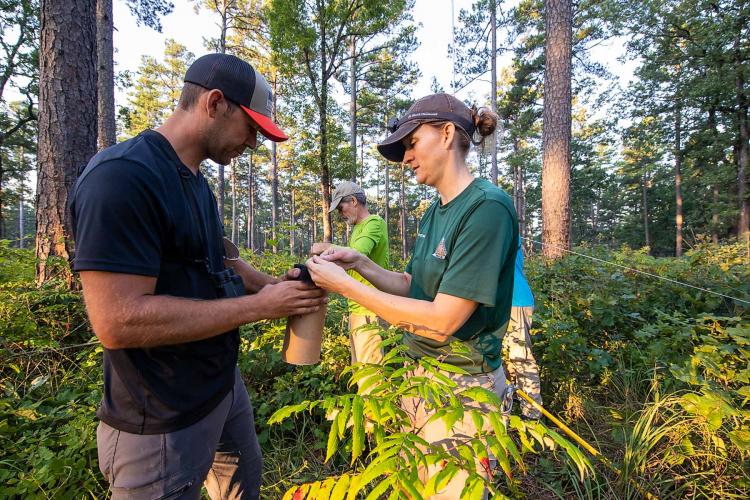


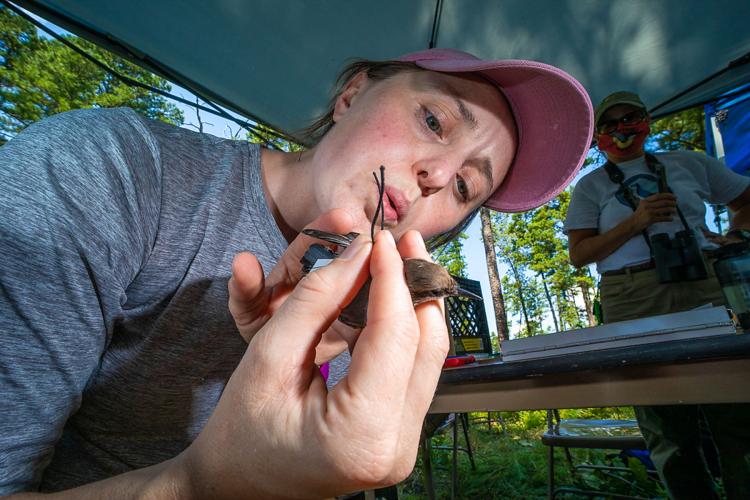
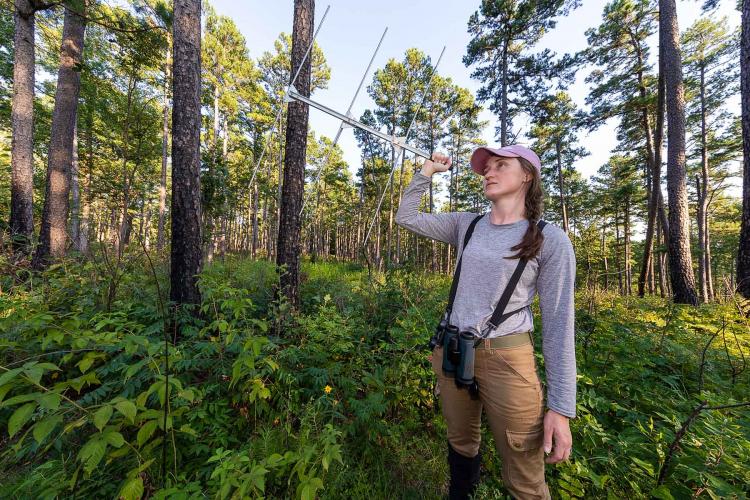
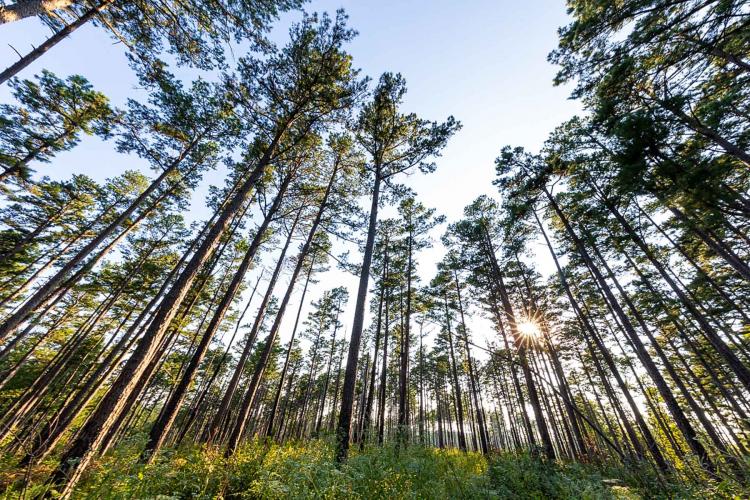
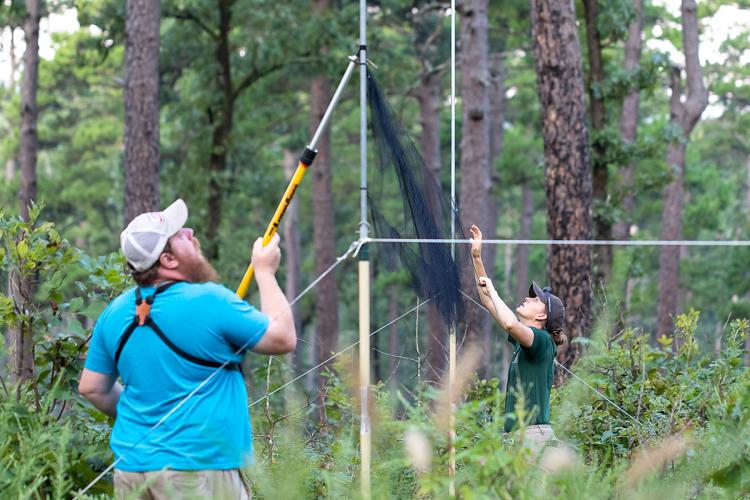
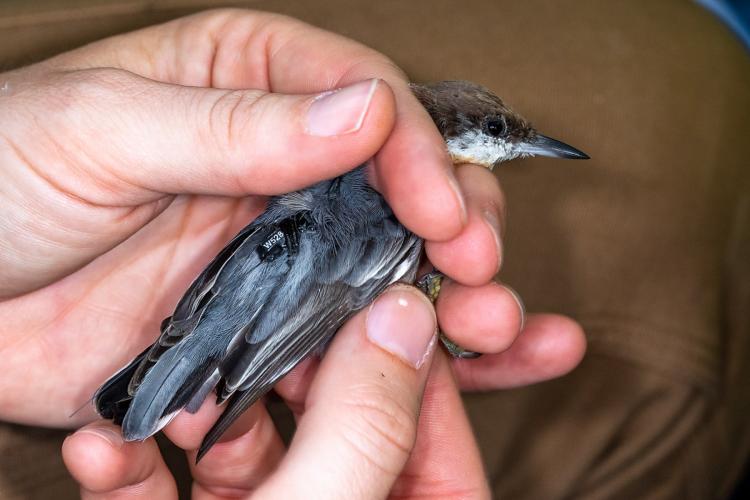

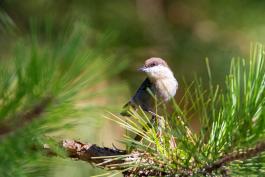

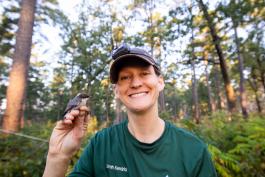
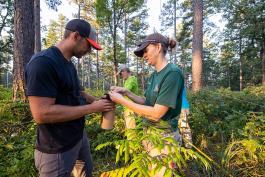


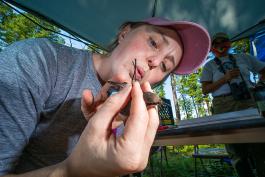


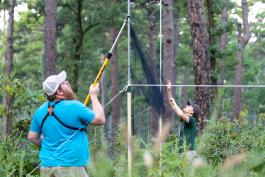

Also In This Issue
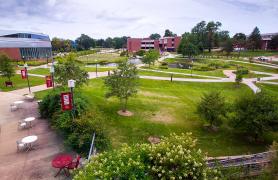
Tree Campus Higher Education benefits college landscapes and students.

Inaugural class of elk hunters share lessons learned.
And More...
This Issue's Staff
Editor - Angie Daly Morfeld
Associate Editor - Larry Archer
Staff Writer - Bonnie Chasteen
Staff Writer - Kristie Hilgedick
Staff Writer - Joe Jerek
Art Director - Cliff White
Designer - Shawn Carey
Designer - Marci Porter
Photographer - Noppadol Paothong
Photographer - David Stonner
Circulation - Laura Scheuler






















